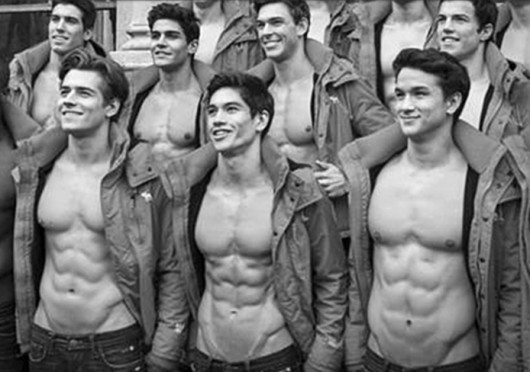
The OSU Board of Trustees voted Aug. 30 to name an emergency room at the Wexner Medical Center the ‘Abercrombie & Fitch Emergency Department.’ Credit: Facebook
In their monthly meeting Friday, the Ohio State Board of Trustees passed a proposal to give a name to the new emergency department at the Wexner Medical Center. Out of all the distinguished professionals to come out of this far-reaching university in its near 150 year existence, who deserved the naming rights more than Abercrombie & Fitch? Yes, the imperious Ohio-headquartered clothing company famous for its scandalous advertising models, absurd clothing prices and a fair share of lawsuits.
Ads fill Abercrombie & Fitch stores and catalogues displaying almost naked young models of both genders in scandalous poses, sending the message to youthful customers that Abercrombie & Fitch clothing will make the opposite gender more sexually interested in them. The last decade has seen the company face multiple lawsuits ranging from racial, religious and physical disability related issues, according to multiple media news outlets including The New York Times.
A $10 million donation in 2008 to the Wexner Medical Center was enough to let the university turn a blind eye to the alarming moral issues connected with Abercrombie & Fitch in the past 10 years.
Following the decision made by the Board, I had one question: In what way does the naming of the “Abercrombie & Fitch Emergency Department” aid the forward progress of this university?
When asked in 2006 in an interview about his company’s clothing sizes, CEO Mike Jeffries responded “In every school there are the cool and popular kids, and then there are the not-so-cool kids. Candidly, we go after the cool kids. We go after the attractive all-American kid with a great attitude and a lot of friends.”
Jeffries admittedly promotes his company’s discrimination and his mind-numbing remarks are just the beginning. But now that we have the Abercrombie & Fitch Emergency Department, what happens when a suspected “not-so-cool kid” gets rushed to the ER with a broken arm? Will he get turned away and told to go elsewhere because he isn’t a cool kid?
Abercrombie & Fitch is also a company who denied a young, autistic girl and her older sister the right to go into a fitting room together because of “store policy aimed at preventing shoplifting,” according to the Minnesota Star Tribune. Despite the fact that the 14-year-old girl had never gone anywhere by herself, the store refused to accommodate her disability and embarrassed her in front of other customers as her mother and older sister protested.
As if the girl had not been embarrassed enough, Abercrombie & Fitch requested medical and scholastic records of the girl as well as an appointment with a psychologist of their choice to make certain she was in fact disabled.
The appalling nature of Abercrombie & Fitch employees at the local and national level led to fines of more than $115,000, according to the Tribune.
Having the Wexner Medical Center connected with a company whose clothing line is well-known for raising body image concerns seems a bit hypocritical for a health institution. Abercrombie & Fitch does not sell women’s clothing greater than size 10, two to three sizes smaller than the average size of an American women as indicated by the Center for Disease Control and Prevention .
Abercrombie & Fitch wants its customers to look attractive and fashionable, but also wants to control what the idea of what is attractive.
Every human being has his or her own ideas of what they do and do not find attractive in another person. It is not up to a clothing company to try and tell us who or what we find attractive, especially when it is strictly based off physical features.
The most shocking point out of all of the bad moves made by Abercrombie & Fitch is the fact that their CEO Jeffries has openly admitted to being gay, according to a 2013 article from Business Insider.
It is not shocking that he is openly gay, that is something he admits to, represents and should be proud of. What is shocking is that someone like him who has faced years of inequality because of his homosexuality, fails to sympathize with others who society may deem unattractive because of their physical attributes.
Maybe this goes to show how money can change the perspective of some who have it. Maybe the university’s decision to grant Abercrombie & Fitch the emergency department naming rights goes to show how money donations can redact from view a company’s moral bigotry.
All that I know is if wearing Abercrombie & Fitch clothing makes you an “attractive, all-American cool kid,” I’m the lamest kid you’re ever going to meet.


